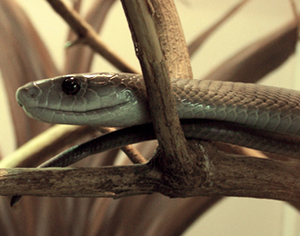Poisonous Snake Guide
Survive The Outdoors 12.21.11

There are no infallible rules for expedient identification of poisonous snakes in the field, because the guidelines all require close observation or manipulation of the snake’s body. The best strategy is to leave all snakes alone. Where snakes are plentiful and poisonous species are present, the risk of their bites negates their food value. Apply the following safety rules when traveling in areas where there are poisonous snakes:
- Walk carefully and watch where you step. Step onto logs rather than over them before looking and moving on.
- Look closely when picking fruit or moving around water.
- Do not tease, molest, or harass snakes. Snakes cannot close their eyes. Therefore, you cannot tell if they are asleep. Some snakes, such as mambas, cobras, and bushmasters, will attack aggressively when cornered or guarding a nest.
- Use sticks to turn logs and rocks.
- Wear proper footgear, particularly at night.
- Carefully check bedding, shelter, and clothing.
- Be calm when you encounter serpents. Snakes cannot hear and you can occasionally surprise them when they are sleeping or sunning. Normally, they will flee if given the opportunity.
- Use extreme care if you must kill snakes for food or safety. Although it is not common, warm, sleeping human bodies occasionally attract snakes.
Snake-Free Areas
The polar regions are free of snakes due to their inhospitable environments. Other areas considered to be free of poisonous snakes are New Zealand, Cuba, Haiti, Jamaica, Puerto Rico, Ireland, Polynesia, and Hawaii.
 Poisonous Snakes of the Americas
Poisonous Snakes of the Americas
- American Copperhead (Agkistrodon contortrix)
- Bushmaster (Lachesis mutus)
- Coral snake (Micrurus fulvius)
- Cottonmouth (Agkistrodon piscivorus)
- Fer-de-lance (Bothrops atrox)
- Rattlesnake (Crotalus species)
Poisonous Snakes of Europe
- Common adder (Vipers berus)
- Pallas’ viper (Agkistrodon halys)
Poisonous Snakes of Africa and Asia
 Boomslang (Dispholidus typus)
Boomslang (Dispholidus typus)- Cobra (Naja species)
- Gaboon viper (Bitis gabonica)
- Green tree pit viper (Trimeresurus gramineus)
- Habu pit viper (Trimeresurus flavoviridis)
- Krait (Bungarus caeruleus)
- Malayan pit viper (Callaselasma rhodostoma)
- Mamba (Dendraspis species)
- Puff adder (Bitis arietans)
- Rhinoceros viper (Bitis nasicornis)
- Russell’ s viper (Vipera russellii)
- Sand viper (Cerastes vipera)
- Saw-scaled viper (Echis carinatus)
- Wagler’s pit viper (Trimeresurus wagleri)
Poisonous Snakes of Australasia
- Death adder (Acanthophis antarcticus)
- Taipan (Oxyuranus scutellatus)
- Tiger snake (Notechis scutatus)
- Yellow-bellied sea snake (Pelamis platurus)
Prepare yourself to treat a snake bite by reading our guide here.




